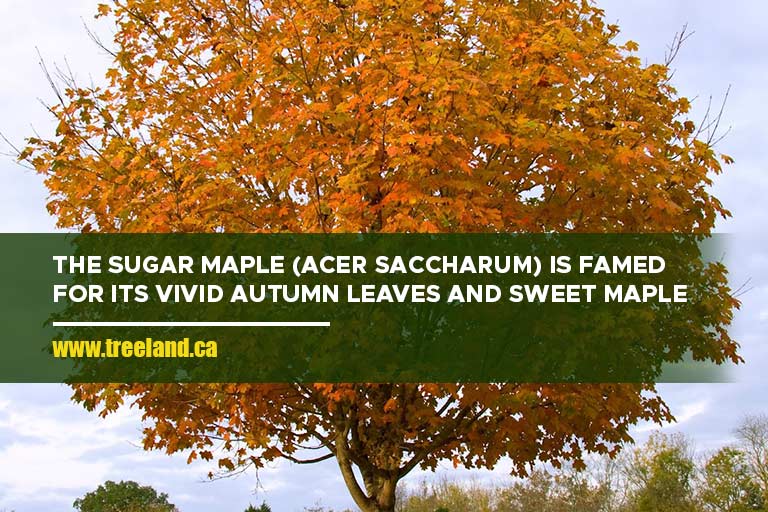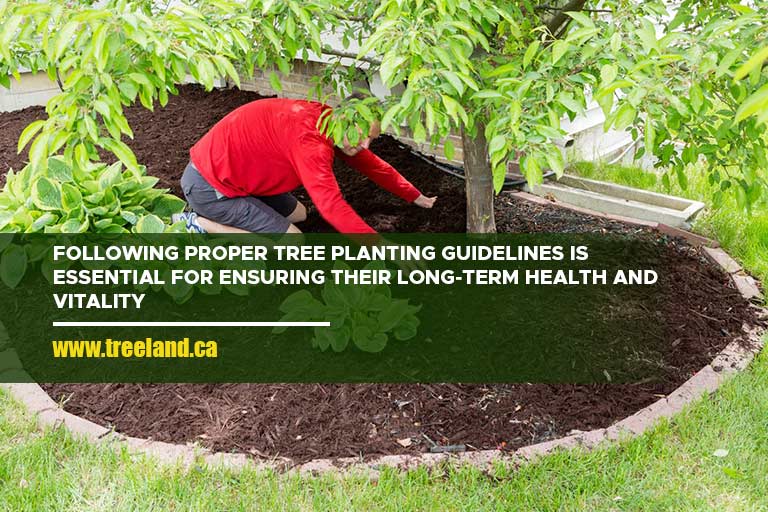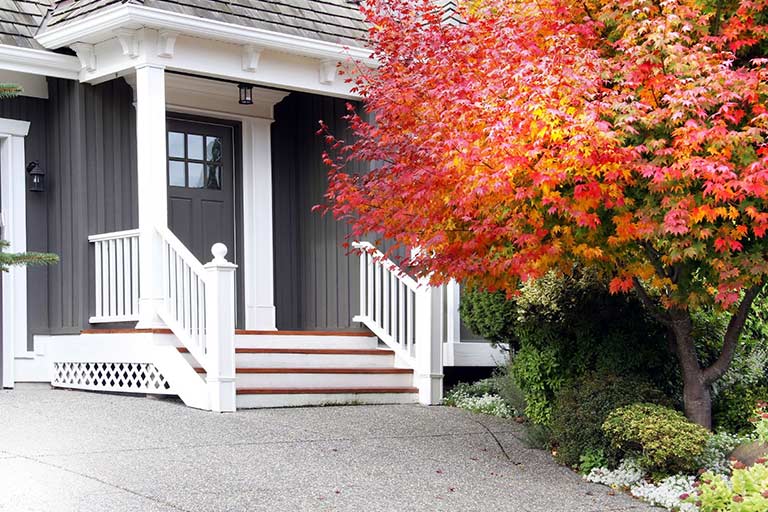Choosing the right tree species is essential for ensuring that your landscape thrives in Vaughan’s unique climate. Vaughan experiences distinct seasonal changes, with cold winters and warm summers, making it crucial to select trees that can withstand these conditions. The right tree can provide numerous benefits, including shade, privacy, and even fruit, while also enhancing the aesthetic appeal of your property.
Factors to Consider When Choosing a Tree Species
When selecting trees for your garden in Vaughan, it’s essential to consider various factors to ensure their success. Factors such as climate, soil type, available space, and the tree’s intended purpose all play a crucial role in making the right choice.
Climate and Hardiness Zone
Vaughan is located in Ontario’s Zone 5b, which means it experiences cold winters and moderate summers. When selecting trees for sale in Vaughan, choose species that are hardy enough to withstand winter temperatures that can dip as low as -26°C (-15°F).
Soil Type and Quality
Understanding your soil type is crucial for tree health. Vaughan typically has clayey soil, which can affect drainage and root growth. Here are some steps to determine your soil type:
- Soil Test Kit: Use a home soil test kit to identify pH and nutrient levels.
- Visual Inspection: Check soil texture by feeling it. Clay soil is sticky when wet and hard when dry.
- Drainage Test: Dig a hole, fill it with water, and see how long it takes to drain. Poor drainage indicates heavy clay soil.
Space and Location
Assess the available space and ensure you account for the mature size of the tree. Consider:
- Proximity to Buildings: Plant trees at least 15-20 feet away from structures to prevent root damage.
- Underground Utilities: Check for underground cables and pipes before planting.
Purpose of the Tree
Selecting the right trees for your Vaughan landscape is more than just a matter of aesthetics; it’s about creating a thriving ecosystem that enhances the beauty and functionality of your property.
Here are some factors that will help you identify the primary purpose of your tree:
- Shade and Privacy: Large, leafy trees like maples provide excellent shade.
- Aesthetic Appeal: Ornamental trees like Japanese Maples add beauty to your garden.
- Fruit-bearing Trees: If you want a productive garden, consider apple or pear trees.
- Environmental Benefits: Trees like Eastern White Pine can improve air quality and provide habitats for wildlife.
Popular Tree Species for Vaughan

Selecting the right trees is essential for enhancing its beauty and vitality. By exploring tree species suited to Vaughan’s climate and environment, you can create a flourishing garden that adds to the city’s charm.
Native Tree Species
Sugar Maple
These trees are known for their stunning fall colours and robust structure. They are well-suited to Vaughan’s climate and soil.
- Benefits: Beautiful autumn foliage, shade, and syrup production.
- Planting and Care Tips: Plant in well-drained soil; water regularly during dry spells.
Eastern White Pine (Pinus strobus)
This native conifer is perfect for providing year-round greenery and habitat for local wildlife.
- Benefits: Fast growth, winter hardiness, and ecological benefits.
- Planting and Care Tips: Plant in full sun; ensure good drainage to prevent root rot.
Ornamental Tree Species
Japanese Maple
These trees are known for their exquisite leaves and vibrant colours.
- Benefits: Ornamental beauty and compact size suitable for smaller gardens.
- Planting and Care Tips: Plant in partially shaded areas; protect from strong winds.
Flowering Dogwood (Cornus florida)
This tree is known for its beautiful spring blossoms and attractive fall foliage.
- Benefits: Seasonal interest and wildlife attraction.
- Planting and Care Tips: Plant in well-drained soil; ensure it receives morning sun and afternoon shade.
Fruit-Bearing Tree Species
Apple Trees (Malus domestica)
Apple trees are a popular choice for Vaughan gardens due to their productivity and variety.
- Best Varieties for Vaughan: ‘McIntosh’, ‘Empire’, and ‘Honeycrisp’.
- Planting and Care Tips: Plant in full sun; ensure proper spacing for air circulation; regular pruning is essential.
Pear Trees (Pyrus)
Pear trees thrive in Vaughan’s climate and can yield delicious fruit.
- Best Varieties for Vaughan: ‘Bartlett’, ‘Bosc’, and ‘Anjou’.
- Planting and Care Tips: Plant in well-drained soil; water deeply during dry periods; thin fruit to improve size and quality.
Where to Buy Trees in Vaughan
If you’re planning to enhance your landscape with new trees, knowing where to purchase them is essential. Finding the ideal source for your tree needs ensures not only quality but also convenience in bringing your landscaping vision to life.
Local Nurseries
Local nurseries are convenient sources for a diverse selection of trees, accompanied by expert guidance on planting and care. These establishments prioritize the health and acclimatization of their plants, ensuring they thrive in the local environment. However, it’s worth noting that the prices at local nurseries may be slightly higher than those at larger retailers. Despite this, the personalized service and assurance of quality make local nurseries a valuable option for sourcing trees in Vaughan.
Online Retailers
When opting for online retailers, convenience is paramount, offering a wide array of tree options at your fingertips. However, it’s crucial to exercise caution and ensure the reliability of the sources you choose. Thoroughly researching the reputation and customer reviews of online retailers can help safeguard against potential disappointments. By prioritizing reputable vendors, you can confidently purchase trees online, knowing they will meet your expectations for quality and reliability.
Planting Guidelines

When it comes to planting trees, following proper guidelines is essential for ensuring their long-term health and vitality. From choosing the right location to preparing the soil and caring for the tree after planting, each step plays a crucial role in its success.
Best Time to Plant
The timing of tree planting plays a significant role in its establishment and long-term health. Optimal planting times are typically in early spring or late fall, depending on the climate and species.
Early Spring Planting
As temperatures begin to rise after winter, early spring offers ideal conditions for tree planting. The soil is usually moist from snowmelt or spring rains, providing ample moisture for newly planted trees to establish their root systems. Additionally, spring planting allows trees to take advantage of the growing season ahead, enabling them to acclimate and grow vigorously during the warmer months.
Late Fall Planting
Planting trees in late fall, just before the onset of winter, can also be advantageous. During this time, the soil is still relatively warm from the summer months, promoting root growth even as the air temperature cools. Additionally, trees planted in late fall have a chance to establish their root systems before the onset of winter dormancy, giving them a head start when spring arrives.
Step-by-Step Planting Instructions
Proper tree planting is crucial for ensuring long-term health and growth. By following a few essential steps, you can give your new trees the best start possible.
- Dig a hole twice the width of the root ball is crucial. This allows the roots to spread easily and ensures that the tree can establish itself more quickly in its new environment.
- Place the tree in the center and backfill with soil. This step is vital to provide stability and ensure that the tree is planted at the correct depth, with the root flare just above ground level.
- Water the tree thoroughly after backfilling to help settle the soil and eliminate air pockets around the roots. This ensures good contact between the roots and soil, which is essential for proper hydration and nutrient uptake.
- Spread a layer of mulch around the tree’s base to retain moisture in the soil and prevent the growth of weeds. This mulch layer also moderates soil temperature and shields against erosion, promoting the tree’s well-being.
Watering and Fertilization
Proper watering and fertilization are critical for the health and growth of your trees. Understanding the specific needs of different tree species ensures they receive the right amount of water and nutrients.
Here’s how to water and fertilize your plants properly:
Watering
Deep watering young trees once a week is essential for establishing a strong root system. This means applying enough water to penetrate the soil deeply, encouraging roots to grow downward and spread out. Mature trees, having established roots, require less frequent watering, but it should still be deep to maintain overall health and resilience, particularly during dry spells.
Fertilizer
Using a balanced, slow-release fertilizer in early spring provides young trees with the necessary nutrients for growth as they emerge from dormancy. Slow-release formulas ensure a steady supply of nutrients over time, preventing nutrient burn and promoting sustained growth. Always follow the package instructions for application rates to avoid over-fertilizing, which can harm the tree and the surrounding environment.
Pruning and Maintenance
Regular pruning and maintenance are crucial for keeping your trees healthy and vibrant. Proper techniques ensure strong growth, prevent disease, and enhance the overall appearance of your landscape.
Pruning Techniques
Remove dead or diseased branches to maintain overall tree health. Thin-out crowded limbs help improve airflow within the canopy, reducing the risk of fungal diseases and promoting better tree structure.
Seasonal Maintenance Tips
Inspect trees in both spring and fall to identify any issues such as pest infestations or disease symptoms early on. Protect the trunks from winter damage with tree wraps or guards to prevent sunscald and frost cracks, ensuring the tree’s overall health and resilience.
Pest and Disease Management
In any garden or landscape, managing pests and diseases is crucial for maintaining the health and vitality of trees. By understanding common pests and diseases that can affect trees in Vaughan, as well as effective prevention and treatment methods, you can ensure your landscape remains vibrant and resilient.
Common Pests
Aphids, caterpillars, borers, scale insects, and spider mites are among the pests that can pose a threat to trees in Vaughan.
Common Diseases
In addition to powdery mildew, rust, and canker, trees in Vaughan may also be susceptible to diseases such as anthracnose, leaf spot, and root rot.
Prevention and Treatment Methods
- Regularly Inspect Trees for Pests or Disease: Conducting regular visual inspections of your trees allows you to detect any signs of pest infestation or disease symptoms early on. Look for unusual spots on leaves, abnormal growth patterns, or signs of insect activity such as webbing or holes in the bark.
- Use Organic or Chemical Treatments as Needed: Depending on the severity of the pest or disease problem, you may need to use treatments to control or eradicate the issue. Organic options such as neem oil or insecticidal soap can be effective against many pests, while chemical pesticides may be necessary for more severe infestations. Always follow the label instructions carefully when applying any treatment.
- Ensure Proper Tree Care: Healthy trees are more resilient to pests and diseases, so it’s essential to provide proper care to keep your trees in optimal condition. This includes regular watering, mulching, fertilizing, and pruning as needed to promote strong growth and reduce stress. Avoiding practices that can weaken trees, such as over-pruning or planting in poor soil conditions, can also help prevent pest and disease problems.
Choosing the right tree species is vital for creating a thriving and beautiful garden in Vaughan. By considering factors like climate, soil type, and the purpose of your tree, you can select species that will flourish in your landscape. Whether you prefer native, ornamental, or fruit-bearing trees, there are many options available to suit your needs.
For a wide selection of healthy, well-cared-for trees for sale in Vaughan, consider visiting Caledon Treeland. Our family-run tree farm offers expert advice and a variety of species to enhance your garden. Give us a call at (905) 880-1828 to book a visit and find the perfect trees for your landscape.

